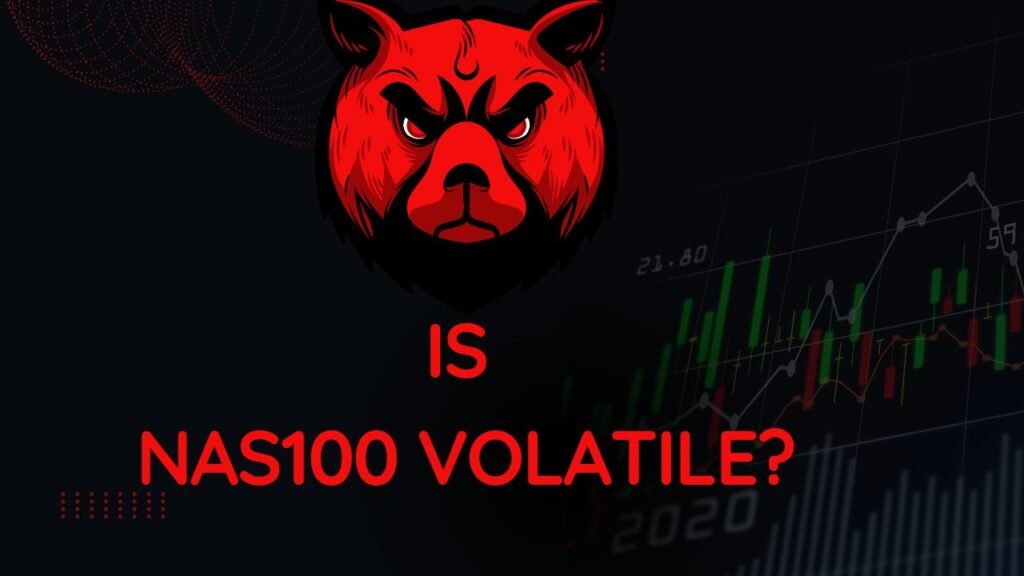
In the world of trading and investing,The Volatility of NAS100 the NAS100 index, also known as the Nasdaq 100, holds a significant position. It comprises the 100 largest non-financial companies listed on the Nasdaq Stock Market, making it a prominent indicator of the tech-heavy segment of the market. But one question often arises: Is NAS100 volatile? In this article, we’ll delve into the volatility of the NAS100 index, exploring its nature and the factors that contribute to its price fluctuations.
Understanding Volatility
Volatility refers to the degree of variation of a financial instrument’s price over time. In simple terms, it measures how much and how quickly the price of an asset changes. For traders and investors, understanding volatility is crucial, as it can present both opportunities and risks.
The Volatility of NAS100
The NAS100 index is known for its association with technology giants such as Apple, Amazon, Microsoft, and Facebook. These companies, while innovative and influential, also contribute to the index’s volatility. Here’s why:
- Earnings Reports: Technology companies often release quarterly earnings reports that can significantly impact their stock prices. Positive reports can lead to rapid upswings, while negative reports can result in sharp declines.
- Market Sentiment: The sentiment surrounding the technology sector, both on a macroeconomic level and due to company-specific news, can lead to sudden price shifts. Positive news can create bullish trends, whereas negative news can trigger bearish movements.
- Regulatory Factors: Technology companies are subject to various regulations that can impact their operations. Changes in regulations, especially those related to data privacy, antitrust measures, and international trade, can cause volatility.
- Innovation and Competition: The tech industry is highly innovative and competitive. New product releases, technological breakthroughs, or increased competition can lead to significant price swings.
Breaking Down Volatility: A Table Analysis
Let’s break down the volatility of NAS100 using a table to illustrate the annualized volatility percentages over the past five years:
| Year | Volatility (%) |
|---|---|
| 2022 | 18.6 |
| 2021 | 23.2 |
| 2020 | 37.8 |
| 2019 | 20.1 |
| 2018 | 25.7 |
As shown in the table, NAS100’s volatility has varied over the years. The highest volatility was observed in 2020, a year marked by the COVID-19 pandemic and its economic impact. The subsequent years have demonstrated relatively lower volatility, but it’s essential to note that the index remains subject to swift changes.
Strategies for Trading Volatile Markets
Dealing with the volatility of the NAS100 index requires careful consideration and well-informed strategies:
- Risk Management: Due to the potential for rapid price movements, risk management is paramount. Setting stop-loss and take-profit levels can help mitigate losses and secure gains.
- Technical Analysis: Utilizing technical analysis tools, such as moving averages and Bollinger Bands, can aid in identifying trends and potential entry/exit points.
- Stay Informed: Staying updated with market news, earnings reports, and macroeconomic trends can provide valuable insights into potential price movements.
In conclusion, the NAS100 index is indeed volatile, influenced by factors like earnings reports, market sentiment, regulations, and innovation. Traders and investors need to approach this volatility with caution and employ effective strategies to navigate the market’s fluctuations successfully.
Remember, while volatility can lead to opportunities, it also carries risks. As always, conduct thorough research and consider seeking advice from financial professionals before making any trading or investment decisions.
Disclaimer: The information provided in this article is for educational and informational purposes only. It should not be considered as financial advice. Trading and investing involve risks, and past performance is not indicative of future results.